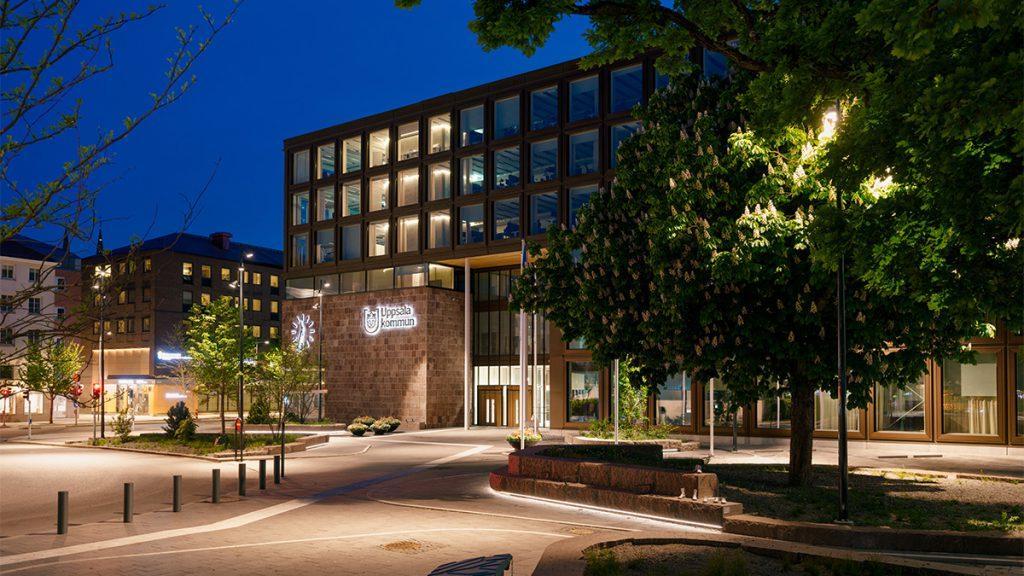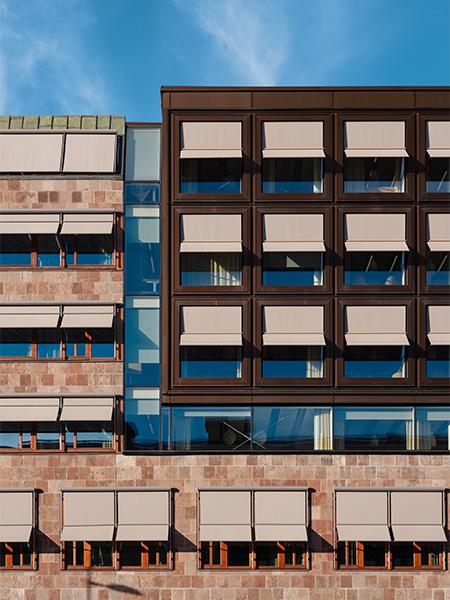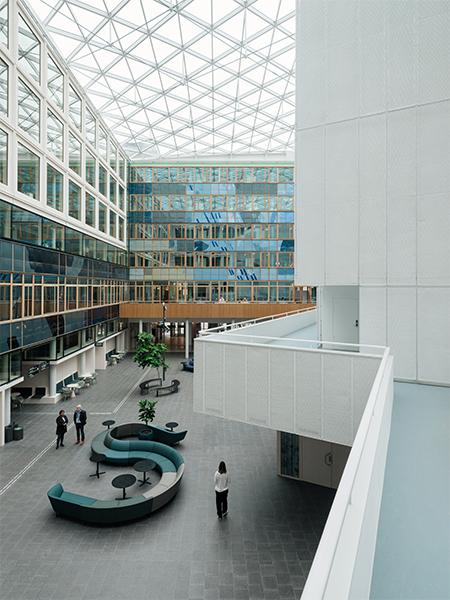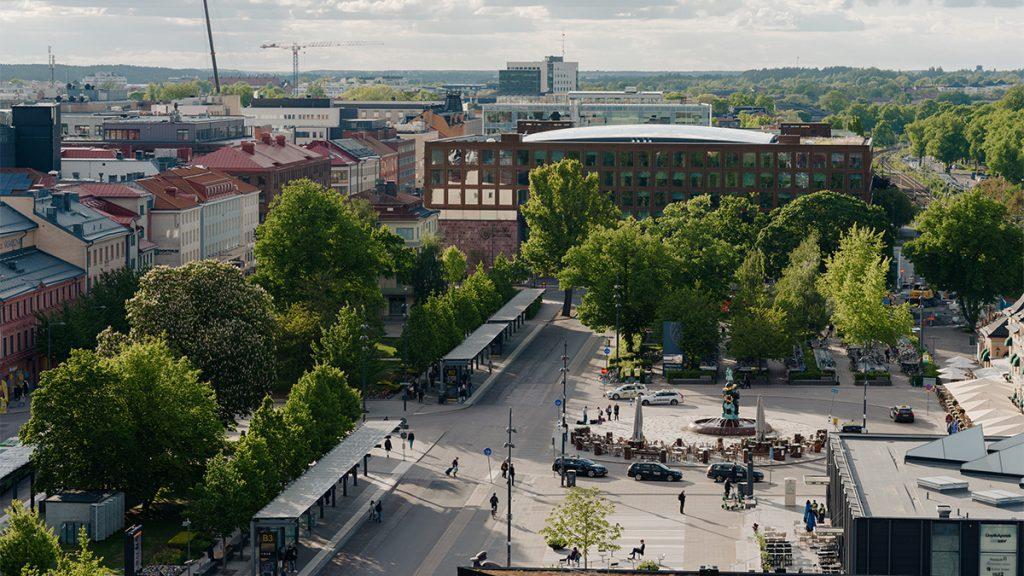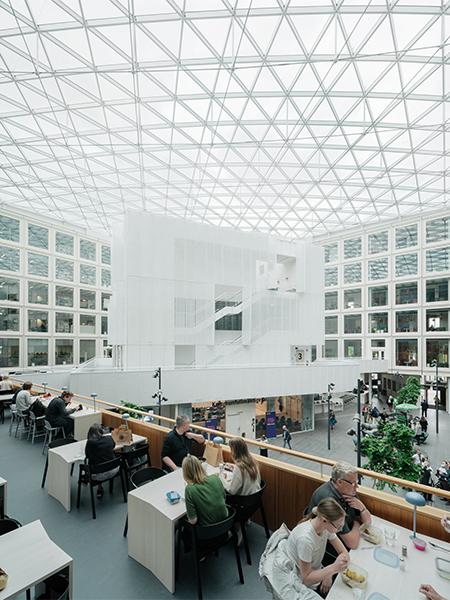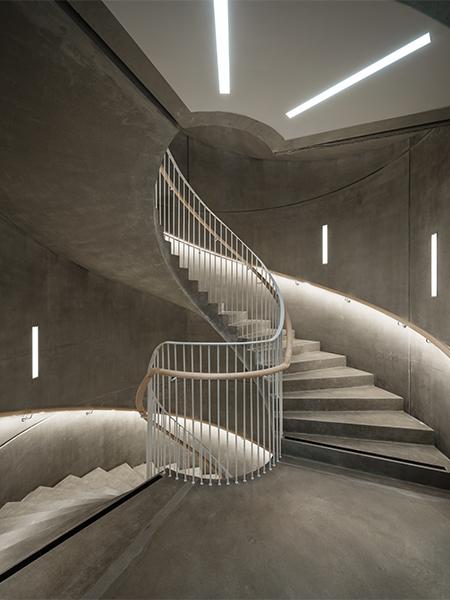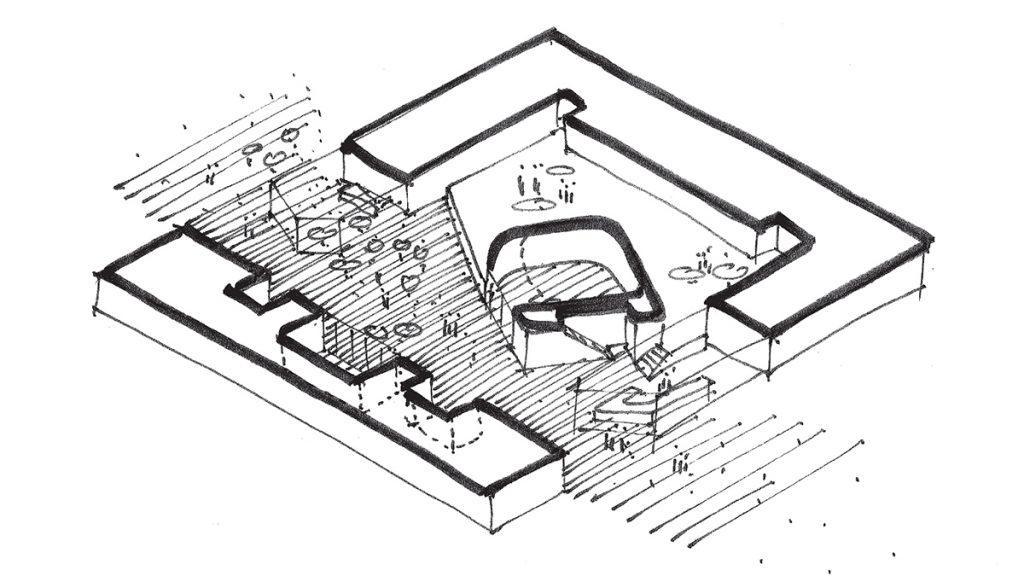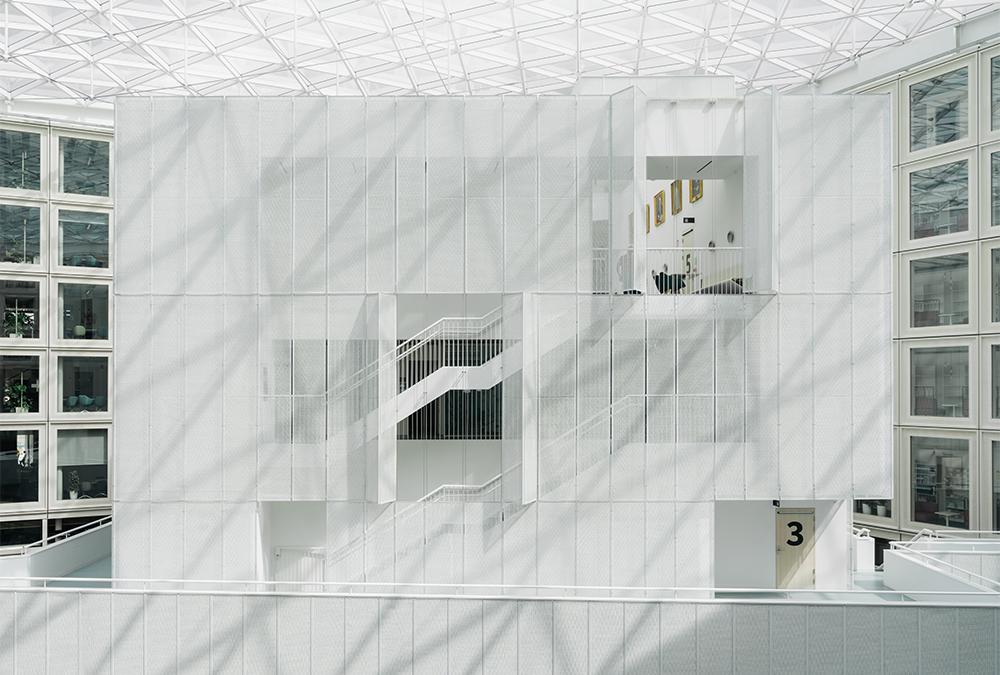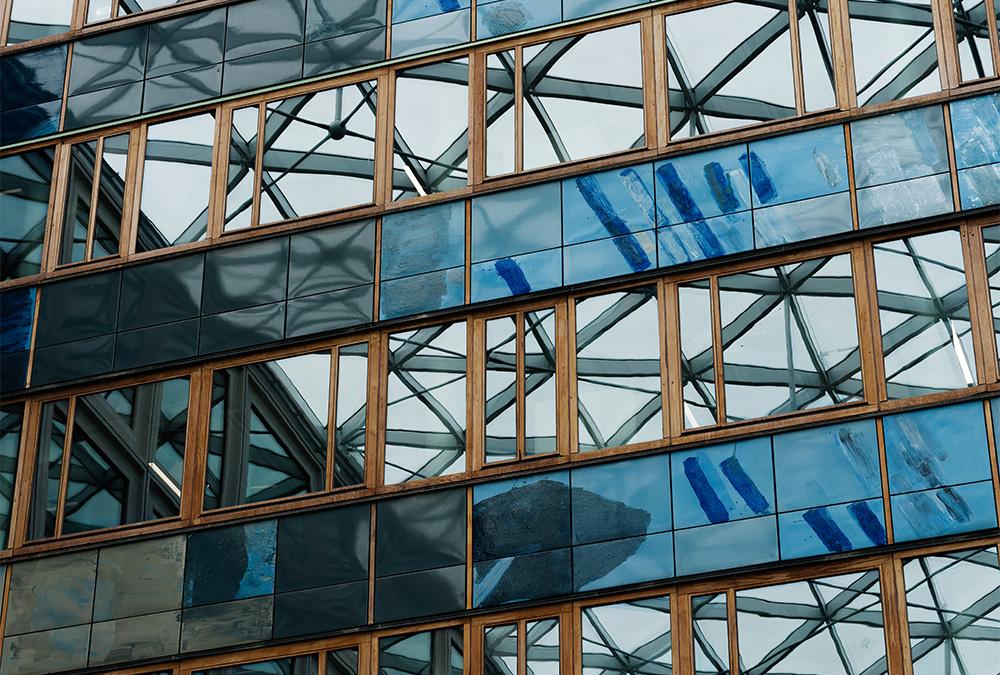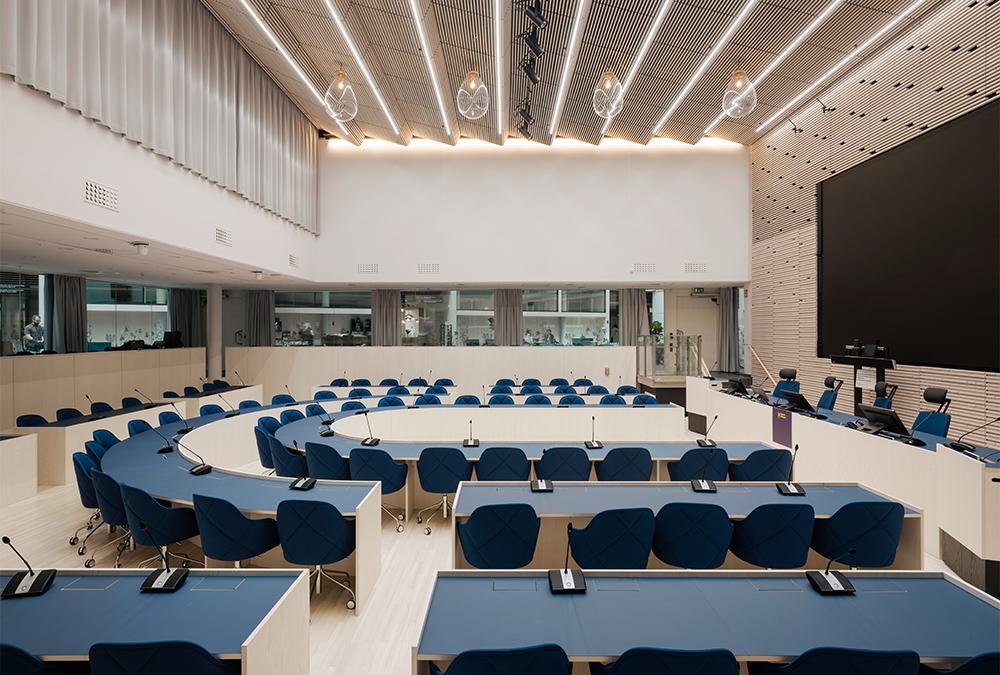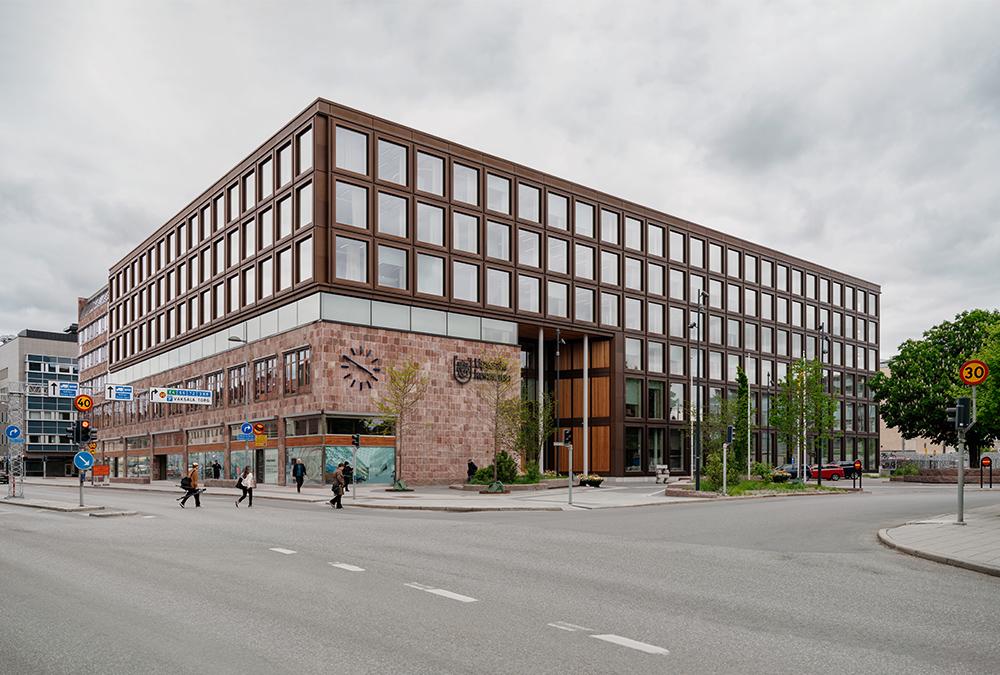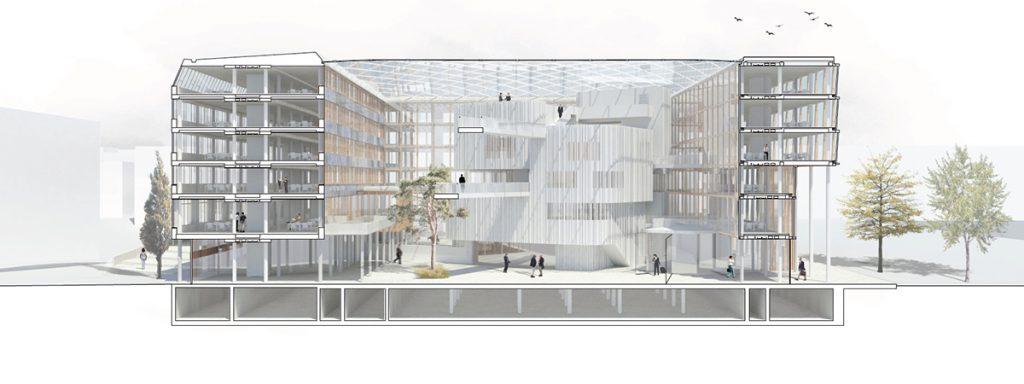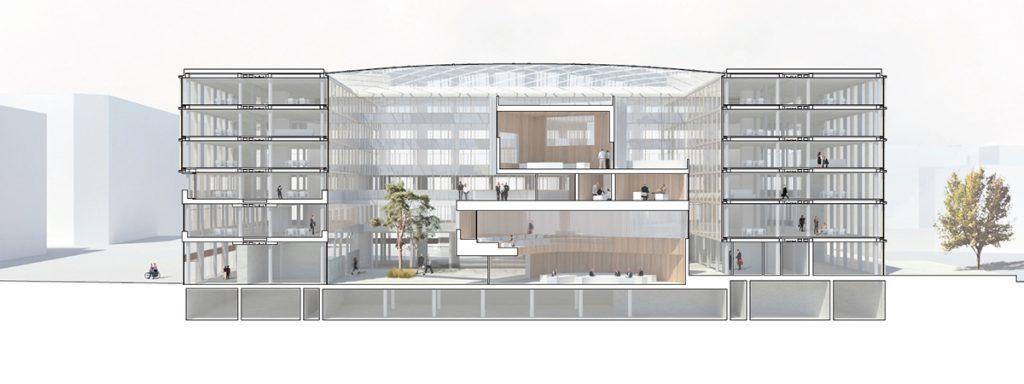Good things come to those who wait
It has been 57 years since work on Uppsala’s town hall was halted due to a lack of funds. But now the finished building is a sight for sore eyes: completed by Henning Larsen with a little help from Japanese technology, it was even singled out as Sweden’s “Building of the Year”.
Erik and Tore Ahlsén, the Swedish architects who were forced to shelve their work 57 years ago for financial reasons, would have been delighted to see the job finally completed. Particularly since Uppsala’s town hall was voted Sweden’s “Building of the Year” in 2022.
Old plans with a modern finish
Sadly, the Ahlsén brothers, who designed the building back in the 1960s, are no longer with us. However, their original plan was completed, updated and primed for the future by accomplished Danish architectural office Henning Larsen. Respectfully and expertly restored, Uppsala Town Hall is now a historically significant architectural highlight that meets all modern-day standards as well.
The Ahlsén brothers’ late modernist design included four five-storey buildings grouped around a central inner courtyard. When funding was only sufficient for three buildings, an L-shape was formed instead. The planned courtyard remained undefined and ended up being used as a mere parking lot. In the following five decades, the city made several attempts to move forward with building work but to no avail.
Incomplete for years on end
This meant that Uppsala Town Hall was never able to meet its intended function – to house all the municipal departments and agencies. Over the decades, many of them were scattered across the entire city. And because no suitable hall was available, the people’s elected representatives were regularly forced to hold their meetings in the nearby concert hall.
For Uppsala Town Hall, we used new solutions to turn this building from the 1960s into a modern, very energy-efficient building.
Jacob Kurek, Global Design Director at Henning Larsen
“A town hall is a physical manifestation of our democracy in the sense that it brings together elected officials with citizens,” says Henning Larsen’s Global Design Director Jacob Kurek. To reflect on this and, at the same time, build on the original vision of the town hall, the team of architects designed a courtyard inviting citizens right into the heart of the complex.
A modern makeover
As Jacob Kurek explains: “As architecture has evolved, so has our technology.” Accordingly, the very latest solutions were used to transform the Uppsala Town Hall – designed in the 1960s – into an extremely energy-efficient, state-of-the-art building. In short, a “building designed for the next 60 years of democracy”.
Only two of the four interconnected buildings originally planned by Erik and Tore Ahlsén were fully constructed 57 years ago. A third building only had three storeys rather than the intended five. However, the original plans laid an excellent foundation for the modern design, as Henning Larsen’s Lead Design Architect Per Ebbe Hansson explains: “The structure underneath was strong enough to continue construction in the future. They knew it would be difficult later so they made the necessary preparations. It was quite incredible to have such a thoroughly planned basis to work from and update it to today’s standards, in terms of both society and building regulations.”
More than a town hall
With the new elements added to the existing architecture, Uppsala Town Hall now covers a total of 25,000 square metres . A passageway leading through the ground floor is the public “heart” of the building, inviting visitors to linger. A range of services is offered there in addition to a café, restaurant, shops and exhibition rooms.
The new, publicly accessible complex preserves the heritage of the old building while adding over 14,000 square metres of new space. This means that Uppsala Town Hall can finally house all the facilities that the city administration needs.
Meeting under the glass dome
One especially impressive feature is the 700-tonne, dome-shaped glass roof that spans a courtyard measuring 1,500 square metres. This area gives the civil servants, site staff and general public an attractive place to converge. However, the council chambers and assembly hall are located in a sculptural building in the courtyard.
As Per Ebbe Hansson explains, the project posed quite a few essential questions for the team: “We had to go and look for the small details of the construction and try to uncover what the actual plan was: What was the meaning of these choices? What did they want to do with this space all those years ago?” Looking back on this project, Hansson feels it was “like going on an exploratory journey of discovery and unravelling the past in a way I didn’t expect”.
Japanese art for Uppsala Town Hall
An extraordinary idea also emerged during this journey. When looking for the best way to combine the old building with new elements, the Henning Larsen team sought inspiration in kintsugi – the Japanese art of repairing pottery with gold.
This idea dovetailed perfectly with the plan to add to the building in a way that accentuates both old and new parts. And so the team decided to make use of the traditional East Asian method for Uppsala Town Hall – albeit in a modified form.
A touch of glass
Per Ebbe Hansson: “We simply used glass instead of gold – which allowed past, present and future to come together in the new incarnation of the town hall.” It was an artful move that benefits the overall project immensely. And one that proves once again how expertly the multiple award-winning Danish architects bring together new and old in perfect harmony.
Henning Larsen’s solutions speak for themselves – with a skilful blend of historical and modern buildings as in the revival of Place de Brouckère in Brussels or now with Uppsala Town Hall. Sustainability and urban quality of life were also a priority, as the architects were aiming for an attractive, environmentally friendly design that would bring people together.
Sustainable future plans
In this way, Uppsala Town Hall meets the strict requirements of the BREEAM SE Excellence Certificate – the Swedish version of the leading international environmental seal – even though the bulk of the complex was built back in the 1960s. Just one more reason why it was worth waiting all this time.
Text: Elisabeth Schneyder
Images: Einar Aslaksen, Henning Larsen
